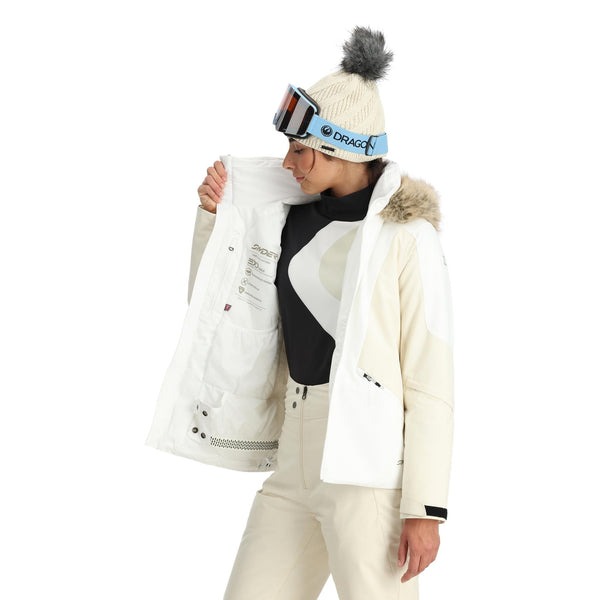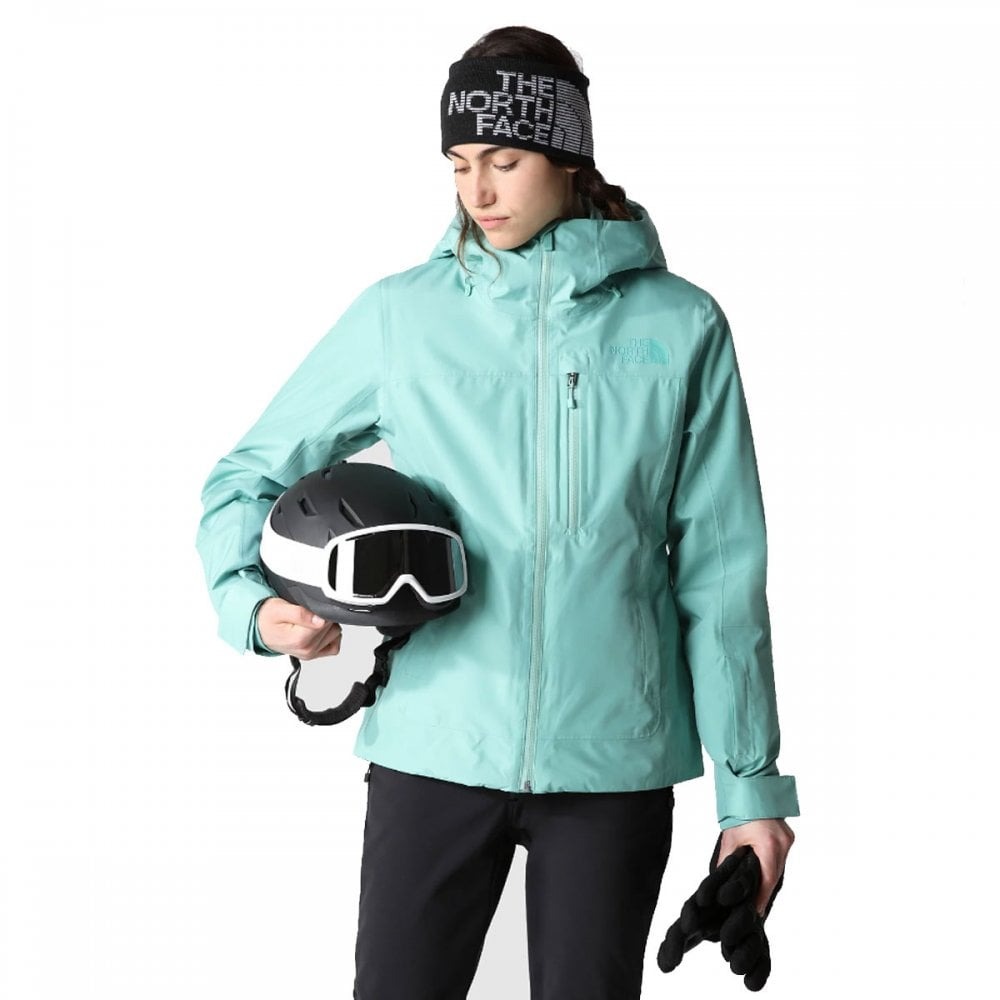Essential Factors to Consider When Choosing Ski Outerwear
When you’re on the hunt for ski outerwear, several factors can impact your decision. Firstly, comfort is critical. Choose materials that won’t irritate your skin and allow for easy movement. Next, consider the outerwear’s waterproof and breathability ratings. These ratings indicate how well the garment keeps you dry and lets body moisture escape. Insulation is another key aspect. It helps retain heat, ensuring you stay warm in frosty conditions.
Durability is also essential. Ski outerwear should withstand frequent use and harsh weather. Look for reinforced seams and high-quality zippers. Additionally, the fit is important for both comfort and heat retention. Outerwear that is too tight or too loose can hinder performance and warmth. Moreover, don’t forget to factor in the convenience of pockets. They are perfect for stowing small essentials on the slopes.
Lastly, style matters for many skiers. While function should come first, choosing ski outerwear that reflects your personal taste can enhance your overall experience. Keeping these factors in mind will help you select the ski outerwear that best suits your needs.
Overview of Ski Jacket Technologies
Ski jackets have come a long way with technology that meets a range of needs on the slopes. When shopping for ski outerwear, consider these advanced features:
- Waterproofing: High-tech membranes stop water from seeping in while allowing vapor to escape. Look for Gore-Tex or similar materials for top-notch protection.
- Insulation: Technologies like Thinsulate or PrimaLoft provide warmth without bulk. They keep you toasty even on the coldest days.
- Breathability: High-quality ski jackets offer ventilation systems, like underarm zips, that help regulate body temperature.
- Wind Resistance: A crucial feature to shield against biting winds. Innovative fabrics block the wind, preserving body heat.
- Stretchability: Fabrics that stretch enhance mobility, allowing you to move freely as you navigate the slopes.
- Seam Taping: Fully taped seams ensure no water leaks through stitching, keeping you dry.
- Reflective Elements: For safety in low visibility, reflective details make you more noticeable to others.
- Adjustability: Features like adjustable hoods, cuffs, and hem help you customize the fit and seal out the elements.
Each of these technologies plays a role in ensuring your time skiing is not just comfortable but also safe. Remember, the key is to blend these innovations with personal preferences to find the perfect ski jacket. The right combination of features can significantly enhance your skiing performance and experience.
The Ultimate Pants for Skiing: Features and Styles

Choosing the right ski pants is crucial for your comfort and performance on the slopes. Ski pants must have certain features that ensure they meet the demands of the sport.
- Waterproofing: Like jackets, ski pants need advanced waterproofing to keep you dry. Look for options with a high waterproof rating.
- Breathability: Good ski pants allow moisture from your body to escape. This keeps you comfortable even after long hours of skiing.
- Insulation: Adequate insulation helps maintain body warmth in cold conditions. However, too much can reduce mobility.
- Adjustability: Look for pants with adjustable waistbands or suspenders for a better fit.
- Ventilation: Pants with zippered vents help regulate your body temperature.
- Padding: Extra padding on the knees and rear end can protect you from falls.
- Styles: Ski pants come in various styles. Choices include bibs, which offer more coverage, and standard pants which are more flexible.
When selecting ski pants, ensure they allow for freedom of movement and add to your overall skiing experience. Pair functionality with personal style to enjoy both comfort and confidence on the slopes.
Layering for Warmth: Best Practices for Skiers
Layering is crucial for keeping warm while skiing. Correct layering ensures you stay comfortable throughout your ski session. Here are some best practices for effective layering:
- Base Layer: Start with a moisture-wicking base layer. It keeps your skin dry by moving sweat away. Choose materials like Merino wool or synthetic fabrics.
- Mid Layer: Add a mid layer for insulation. This layer traps body heat to keep you warm. Fleece or a lightweight down jacket works well.
- Outer Layer: Your ski outerwear serves as the outer layer. This should be waterproof and breathable. It protects against snow, wind, and rain.
- Adjust Layers: Be ready to adjust your layers based on the weather and activity level. Remove a layer if you feel too hot. Add a layer if you’re cold.
Correct layering can enhance your performance and comfort on the slopes. Choose each layer carefully for the best experience. Always ensure that your ski outerwear fits well over your layers.
Accessories to Complement Your Ski Outerwear

Choosing the right accessories to complement your ski outerwear can significantly enhance both functionality and style. Here are some essential accessories every skier should consider:
- Gloves or Mittens: Look for waterproof and insulated options to keep your hands warm and dry throughout your ski sessions. Gloves with grip can improve ski pole handling.
- Beanies and Hats: A good beanie or ski hat is crucial for heat retention, as a lot of body heat is lost through the head. Choose one that covers your ears well.
- Ski Goggles: These protect your eyes from UV rays and improve visibility during snowfall or bright conditions. Make sure they are anti-fog and fit well with your helmet.
- Neck Gaiters or Scarves: They provide necessary warmth for your neck, preventing chilly winds from getting inside your jacket.
- Ski Socks: Invest in socks designed specifically for skiing. They offer better cushioning and warmth than regular socks. Ensure they wick moisture to keep your feet dry.
- Helmet: Safety first—use a helmet that fits properly and provides good ventilation. This protects against head injuries and keeps your head warm.
Combining these accessories with your ski outerwear enhances your protection against the elements and ensures a comfortable and enjoyable skiing experience.
Maintenance Tips for Long-Lasting Ski Gear
To keep your ski outerwear in top condition, follow these maintenance tips. Proper care extends the life of your gear and ensures it remains effective on the slopes.
- Regular Cleaning: Wash your ski jackets and pants according to the label’s instructions. Avoid harsh detergents that can damage waterproof coatings.
- Reapply Waterproofing: After washing, use a waterproofing spray to restore the water resistance of your outerwear.
- Dry Thoroughly: Always make sure your gear is completely dry before storing it. Moisture can lead to mildew and damage the material.
- Prompt Repairs: Fix any tears or rips immediately to prevent them from getting worse. Use patches or take them to a professional if needed.
- Proper Storage: Hang your outerwear in a cool, dry place during the off-season. Avoid folding to prevent creases that could weaken the fabric.
- Avoid Heat Sources: Keep your gear away from direct heat, as high temperatures can melt or damage the fibers.
- Check Seams and Zippers: Inspect these areas regularly to ensure they’re intact and functioning well. Apply lubricant to zippers if they become sticky.
By implementing these care strategies, your ski outerwear will be ready to perform when winter comes around. Regular maintenance not only preserves your gear’s condition but also contributes to your safety on the slopes.
Trends in Ski Outerwear: What?s New for Winter 2024

As winter 2024 approaches, ski outerwear trends are evolving with fresh styles and features. These are some of the changes to look out for:
- Bold Colors and Patterns: This season, expect to see bright colors and bold patterns on the slopes. Ski enthusiasts want to stand out, and brands are responding with vibrant designs.
- Eco-Friendly Materials: There’s a growing demand for sustainable ski wear. Manufacturers are using recycled materials and eco-friendly processes more than ever.
- Smart Integration: Gear is getting smarter with built-in technology. Some new jackets feature pockets designed specifically for tech devices, while others boast integrated heating systems for extra warmth.
- Lightweight Insulation: Advances in fabric tech mean you don’t need bulk to stay warm. New insulation materials offer high warmth-to-weight ratios, so outerwear is lighter and less cumbersome.
- Improved Stretch and Flexibility: Fabrics are more stretchable, offering better movement. This feature is now common in ski pants and jackets alike, for superior comfort and freedom.
- Cross-over Appeal: Ski outerwear isn’t just for the slopes anymore. Styles are becoming more versatile, suitable for both skiing and everyday winter wear.
Stay updated with these trends to not only boost your style but also enhance your skiing performance. Remember to balance the latest trends with the essential factors of comfort, durability, and insulation for the best experience in ski outerwear.
Choosing Eco-Friendly and Sustainable Ski Wear
Sustainability in ski outerwear is gaining traction. As skiers, we carry a responsibility to protect the winter landscapes we cherish. Luckily, choosing eco-friendly gear has never been easier. Here’s how you can make sustainable choices for Winter 2024:
- Look for Recycled Materials: Many brands now use recycled fabrics in their ski jackets and pants. These materials come from post-consumer waste, cutting down on landfill and reducing carbon footprints.
- Eco-friendly Production: Check if the brand uses sustainable practices in production. This includes using less water, reducing emissions, and non-toxic dyes.
- Durability Equals Sustainability: Durable ski wear might cost more upfront but lasts longer. This means buying new gear less often, which is better for the planet.
- Choose Repairable Items: Gear that’s easy to repair encourages you to fix rather than replace. Look for ski wear with a warranty that covers repairs.
- Support Brands with a Cause: Some companies go further by supporting environmental initiatives. Choosing these brands helps fund conservation efforts.
- Certifications Matter: Look out for certifications like Bluesign or OEKO-TEX. They ensure the products meet strict environmental and safety standards.
- Biodegradable Options: Some new technologies include biodegradable membranes and insulation. These materials break down more quickly at the end of their life cycle.
Remember, your buying choices have power. You can stay warm, look great, and be kinder to the environment. It’s a win-win-win for you, the sport, and the planet.


